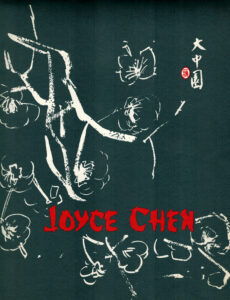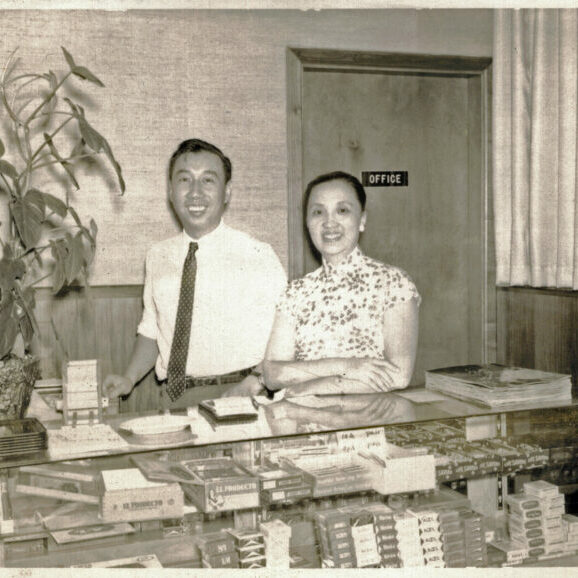
Culinary History Hub
Culinary History of Cambridge
By Rain Robertson, and revised by Deb Mandel, 2022
Cambridge holds a rich and distinctive culinary history. It gave America ice, the Porterhouse steak, Peking ravioli, its first star chef in Julia Child, and a hankering for Indian food.
This is a survey of 20th century markets, delis, cafeterias, and local institutions. The establishments highlighted were chosen for their popularity, longevity, and/or reflection of the times. Longtime residents will notice not every beloved spot is included, as there are simply too many to list, or too little information existing. Information about the area’s many confectioners, such as NECCO and Squirrel Nut have been made available in this online exhibit. Similarly, the abundance of ice cream parlors that once populated Harvard Square, like Brigham’s and Herrell’s, inspires its own survey. And spas (old-time neighborhood convenience stores) have not been included, though a few like Montrose Spa continue to operate.
This sampling essentially gives a local snapshot of food culture progressing from fresh and local, meeting the melting pot, mass production, global capitalism, women’s equality, a growing health consciousness, New American cuisine, and then slowly heading back to the farm.
Throughout the COVID-19 pandemic, food purveyors were on the front lines, creatively expanding take-out and delivery services, incorporating safety protocols and adding outdoor seating. It has been difficult, and we take our hats off to our friends in the culinary professions who persevered through the challenges and gained much appreciation by those working from home, quarantining and yearning for something delicious to get through the day.
This listing also recognizes awards and community contributions many restaurateurs have participated in. Throughout the years, restaurants have taken an active role in addressing food insecurity, homelessness, and other community and public health concerns. Their fundraising efforts have been impressive.
In this Hub
- Setting the Culinary Stage
- Restaurants
- Photo Gallery
- Articles
- Videos
- Notes on this Hub
- Sources
- Special Thanks
Setting the Culinary Stage
The 19th c. saw Cambridge’s Fresh Pond Ice Company at the forefront of the world ice harvesting industry, helping lay the foundation for the culinary culture to come. Their ice was widely used in households and restaurants for preservation of perishable goods, a1nd in new delicious beverages called cocktails. Cambridge’s Acme Ice (since 1952) is one of the few operating Cambridge ice suppliers today.
19th c. Porter Square was a major thoroughfare of the area’s thriving cattle industry, and its Porter Hotel housed and fed the public. Variously known as the Porter House, this is where the oversized, tenderloin-rich T-bone steak called a Porterhouse got its name. Frank’s, the oldest-operating steak house in Boston, was to be born in the same, though quite changed, neighborhood generations later.
Early 20th c. Cambridge saw immigrants carving out a living through provincial culinary traditions in delis and markets, such as in the oldest continually-operating restaurant in Cambridge, the S & S Deli. It also saw luncheon counters, sandwich shops, and communal eateries open all hours, servicing factory workers and students. Unless worldly hotel dining could be afforded, as at Harvard Square’s Commander Hotel, home cooking was generally what one did. Prohibition and the Depression brought a taste for thrift, WWII a desire for escapism and a new curiosity for exotic flavors, and the Baby Boom era a desire for ease and shortcuts. It wasn’t until the 1960s when Julia Child, followed closely by Joyce Chen and the Design Research store, stirred up a new American culinary consciousness. This new inspiration for embracing multiethnic cuisine and classic techniques, followed by the “local and seasonal” influence of figures like Alice Waters (on the west coast), helped shape Boston’s culinary revolution from downtown hotels to the kitchen of Cambridge’s Harvest to the ice cream of Toscanini’s.
1900-1950
You’ve seen pictures of those grand, old world markets with rows of spring lamb strung outside, handwritten sandwich boards, vaulted interiors, and long glass display counters selling everything from cheese to chestnuts? Central Square had one of those. Manhattan Market provisions company on Mass. Ave. between Pearl and Magazine Streets, proudly served the community from 1888 to about 1950, and was one of the last of its kind in the area. Savenor’s, while diminutive in comparison, has surpassed its longevity and continues to serve the community in similar fashion since 1938.
Supermarkets, frozen food sections, and mass-produced goods soon arrived, as urban development pushed local farms out of reach. The international Harvard and Radcliffe community demanded multicultural imports such as beer and cooking spices and got them at places like Cronin’s and Cardullo’s, while multiethnic culinary life diversified in East Cambridge along Cambridge Street from Portuguese to Brazilian, Haitian to Jewish. Prohibition caused taverns like Joey Mac’s, Charlie’s Tap, and Joe’s Place to focus on food instead of shutting down. The Window Shop, one of the more emblematic and unique establishments of the era, operated as a combination coffee, luncheon, and consignment shop created foremost to assist European refugees around WWII.
Formerly rural, Cambridge was still progressing as a residential community peppered with industry and a growing student population. This is a dense era where New England fare meets multiculturalism (immigration) meets thrift (Great Depression & world wars) meets demand (Baby Boom) and prepares to meet postwar global capitalism.
1950-1980
This was an important and fertile culinary era in Cambridge. A gastronomic revolution took shape thanks to the synergy of a few enterprising women and a growing taste for escapism and “exotic” flavors in the WWII through Vietnam era. This taste was satisfied by Pacific Rim restaurants and Tiki culture, as seen in Aku Aku, Hong Kong, and Joyce Chen. The breezy Mediterranean vibe of Casablanca in 1955 also fit the bill. 1960s Cambridge saw an emergence of French cuisine, with Henri Quatre, Le Bocage, Chez Nous, and Chez Jean leading the charge with dishes like Duck a l’Orange and Escargots Bourguignonne. Furthermore, escapism from kitchen “duty” and feeding large families during the Baby Boom ushered in an era of convenience and gimmicky shortcuts in canned, frozen, and fast foods. Enter Joyce Chen and Julia Child – the country’s first celebrity chefs – and a reaction to America’s soulless home cooking.
Joyce Chen, sometimes called “the Chinese Julia Child”, was equally enthusiastic for opening American palates to authentic Mandarin cuisine. She gained national recognition through her own public television series and cookbook, but in contrast to Child, she ran restaurants (the first predating Child’s arrival in Cambridge) and an eponymous import and kitchenware business. Her descendants still run various Massachusetts kitchens today.
Not only did Julia Child call Cambridge home and sing the praises of its establishments, but while here, transformed forever the way Americans experience food: with delight, confidence, and classic techniques. For women, her presence showed the dainty model of an American housewife that getting her hands dirty, boning a duck, making dinner from scratch, was not only OK, but actually a pleasure. Her WGBH cooking shows, filmed in Cambridge, and her several culinary tomes which demystified classic French cooking not only empowered scores of TV Dinner-eating home cooks, but influenced generations of chefs like Alice Waters on the West Coast and Boston’s own Gordon Hammersly and Lydia Shire. Such chefs, in turn, set the stage for Boston’s dining revolution.
“The store that brought modern living to American homes,” Design Research, paralleled this evolution from its post in Harvard Square. They stocked previously unknown European kitchen tools and tableware – much of which appeared on Child’s The French Chef. Next to the D/R store, Harvest restaurant was another key player in Cambridge’s culinary history. From the seventies to nineties, Harvest was a veritable training ground (some would say playground) for the who’s who of chefs and restaurant vets today, some still working in Cambridge.
1980-2000
A new era of health consciousness took root, along with an explosion of restaurants both casual and decadent inspired by world cuisine. In 1989, Julia Child’s magnum opus, “The Way to Cook,” gave new fuel to our delight in eating. We saw the emergence of creative New American Cuisine, followed by a burgeoning seasonal, local, farm-to-table ethic which continues today in the kitchens of Jody Adams, Steve Johnson, and Chris Schlesinger, to the microbrews of Cambridge Brewing and the flavors of Christina’s ice cream.
Cambridge dining bloomed due to its ethnic diversity and adventurous eaters. A kind of multicultural row, Cambridge Street from Lechmere to Inman blossomed in Casa Portugal (since ’76), Midwest Grill, Olé, The Druid Pub, and 1369 Coffeehouse. Courthouse Seafood and New Deal Fish Market continued to operate as the oldest fish markets in town, while new specialty and import shops like Formaggio Kitchen, Iggy’s Bread, and Hi-Rise Bakery opened and expanded.
Restaurants closed and new ones opened in their retooled kitchens. 5 Craigie Circle, post-Chez Nous and Le Bocage, saw Pulcinella, Café Celador, Butterfish, Craigie Street Bistrot, and Ten Tables. The Athenaeum building saw Michaela’s, Salamander, followed by Cambridge’s second culinary school, Le Cordon Bleu. Chez Jean became Chez Henri. Daddy-O’s on Hampshire St. became Oleana, run by the acclaimed Ana Sortun. Aku Aku became Jasper White’s Summer Shack. And by the turn of the millennium, for better or for worse, the cult of the celebrity chef had begun.
Restaurants
- Cambridge School of Culinary Arts
- Cardullo’s Gourmet Shop
- Courthouse Seafood (Restaurant & Fish Market)
- Frank’s Steak House
- Hayes-Bickford Cafeteria
- India Pavilion
- Joyce Chen Restaurant
- Julia Child’s Kitchen
- Legal Seafoods
- Nick’s Beef and Beer House
- S & S Restaurant
- Simeone’s
- Tasty Sandwich Shop
- Window Shop
- Wursthaus
Photo Gallery
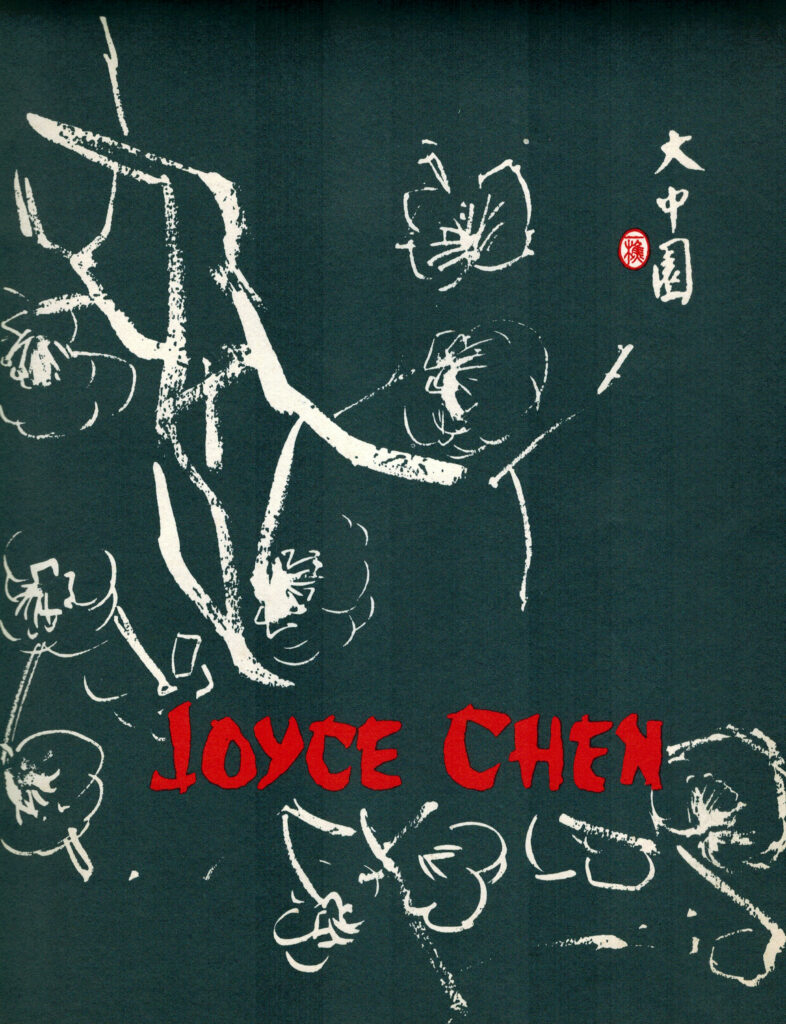
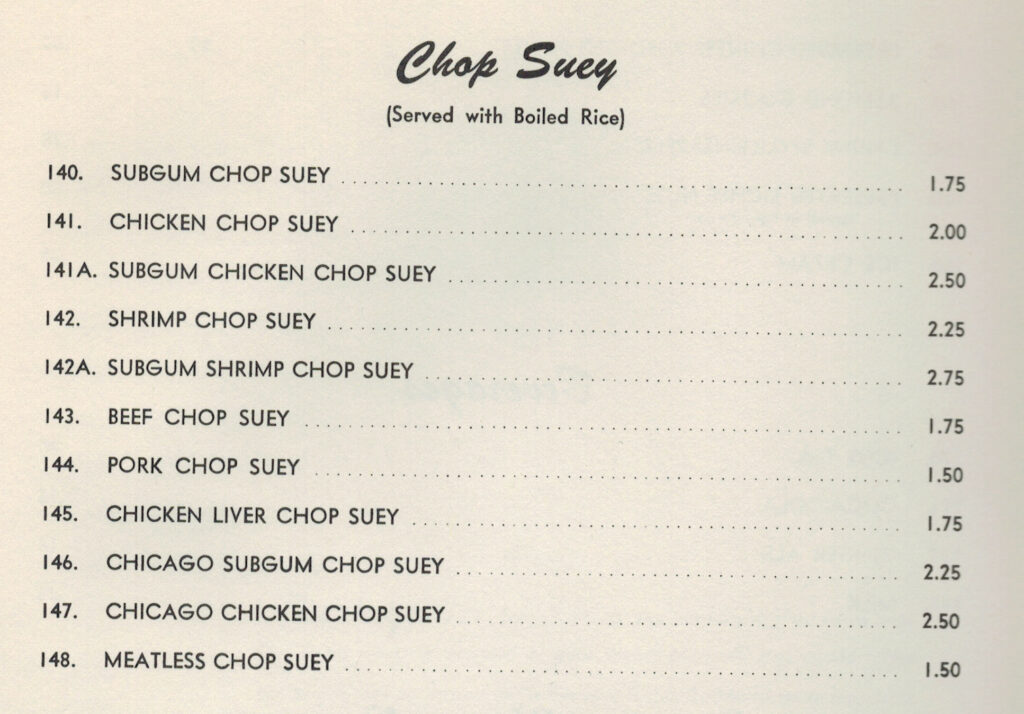
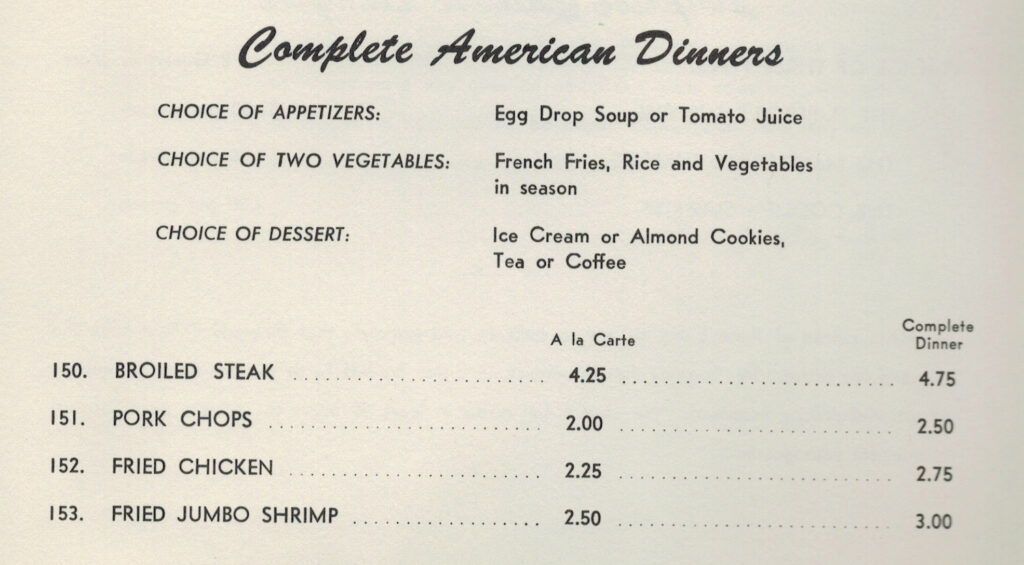
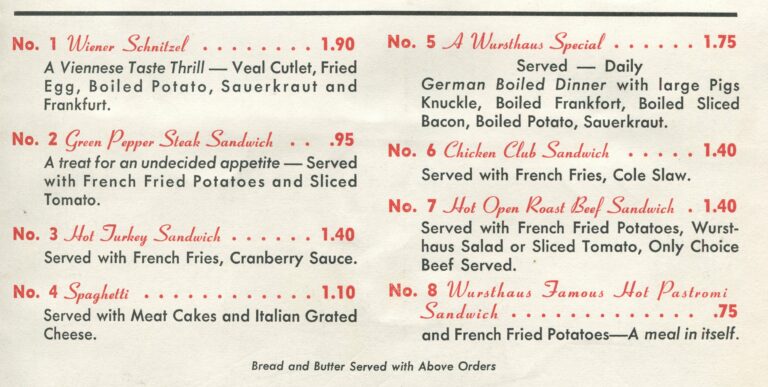

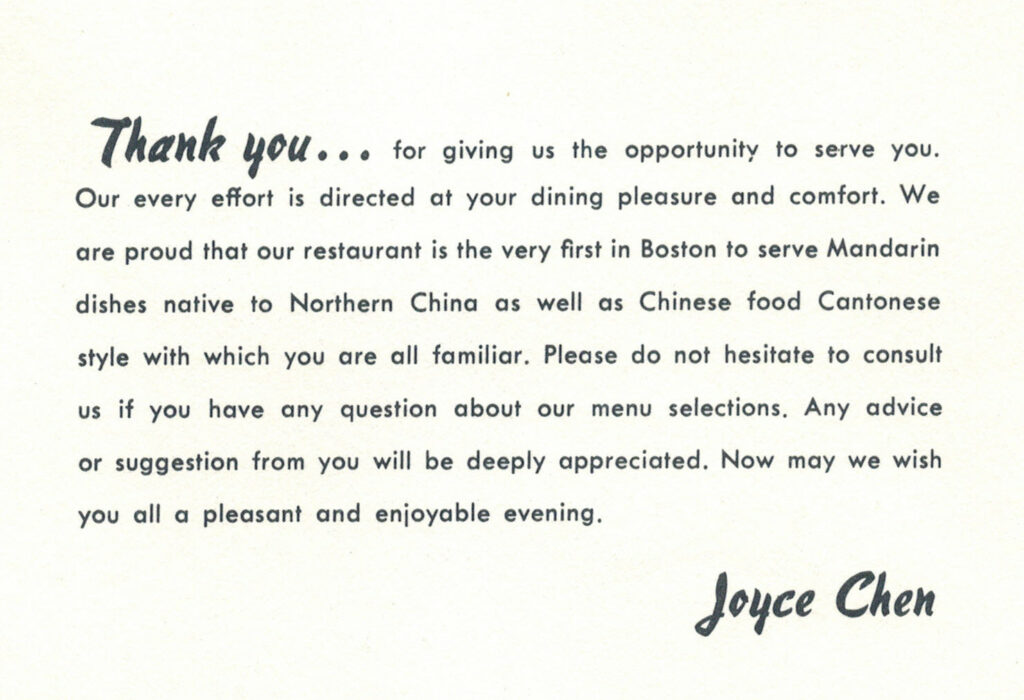

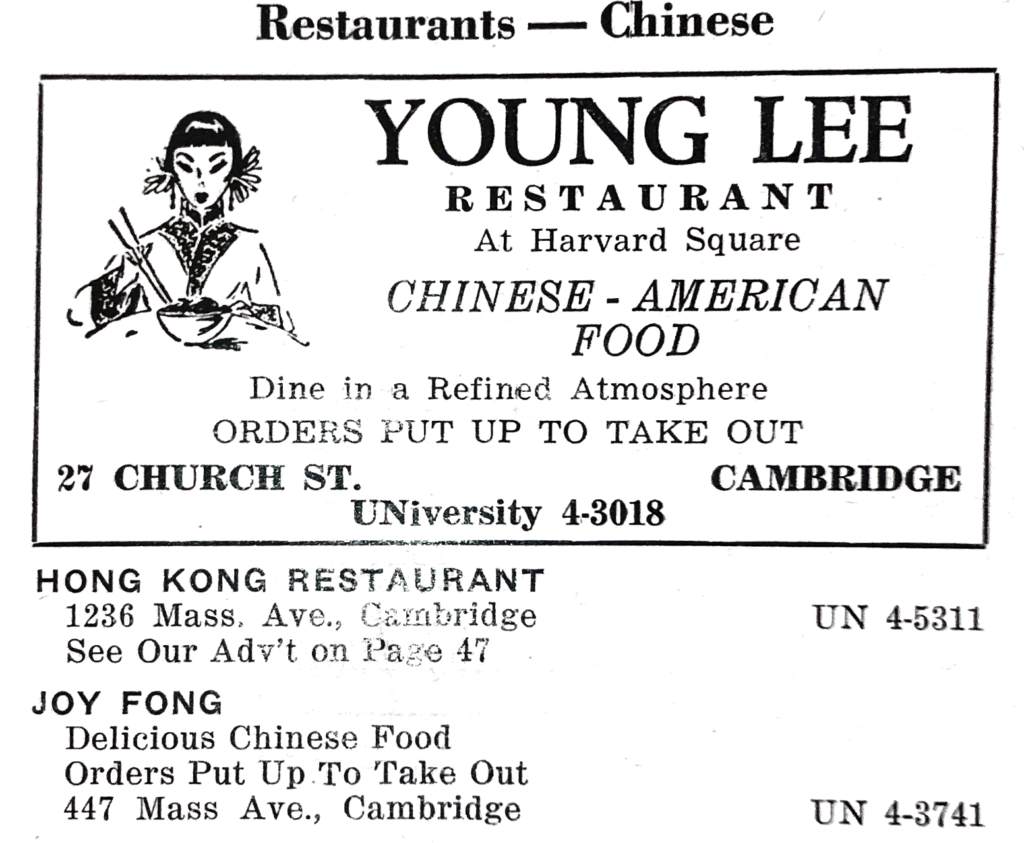

Articles
- Eliodora ‘Josefina’ Yanguas Perez opened Harvard Square’s first European-style café
- Changing Tides in Cambridge Industry
- S&S Restaurant is still serving up the comfort after more than a century in Inman Square
- Joyce Chen started with a 250-seat restaurant, went to 350 and only grew her empire from there
- Grendel’s Den: 50 years of Stories to Tell
Videos
Notes on this hub
This is a compilation of notable movers and shakers in Cambridge’s culinary history. It is by no means comprehensive or complete. In 2012, freelance writer and Cambridge restaurant worker Rain Robertson produced the first version of these entries. Since then, new populations, eating trends, talented chefs, and international flavors have found a home in Cambridge and this history will be updated. For example, in 2022, new information and images were added; some establishments closed by choice, and/or were challenged by the COVID-19 pandemic and other difficulties.
Sources
Individuals from local archives, historical newspapers, books and blogs were consulted.
Cambridge Newspapers, available online through the Cambridge Public Library, were extremely useful. Here is a link to the sources used generally.
Special Thanks
From Deb Mandel, author: Thanks to Marieke Van Damme, Executive Director of Cambridge History for entrusting this project to me, introducing me to resources and guiding my progress throughout; Alyssa Pacy, Archivist at the Cambridge Public Library for meeting with me through the seasons to provide archival material and suggestions for further leads. She introduced me to the Simeone’s collection among other research treasures; Kit Rawlins, Ellen Shea of Schlesinger Library‘s Research Services in answering my questions and granting permission to use photographs from their collections; Meg Winslow of Curator of Historical Collections & Archives and Jennifer Johnston, Media and Communications, Mount Auburn Cemetery for getting me photos of the gravestones for Joyce Chen and Josefina Yanguas.
Thanks, too, to the hardworking culinary chefs and managers: Stephen Chen, (son of Joyce Chen), Amy Baum & Gary Mitchell (co-owners of S & S); Laura Donovan; Marketing Manager, Himmel Hospitality Group (Harvest); Kari Kuelzer and Grendel’s Team from Grendel’s Den; Jody Adams of Rialto; Morgan Mannino, Media Manager, Formaggio; Mary-Catherine Diebel former owner UpStairs at the Pudding/UpStairs at the Square; Carol Fippin for photographs of Josefina Yanguas. Thanks to History Cambridge’s intern, Gretchen Adams for her excellent research on Yanguas and Pamplona. Thanks too to Kara Baskin from The Boston Globe who filled in some gaps.

